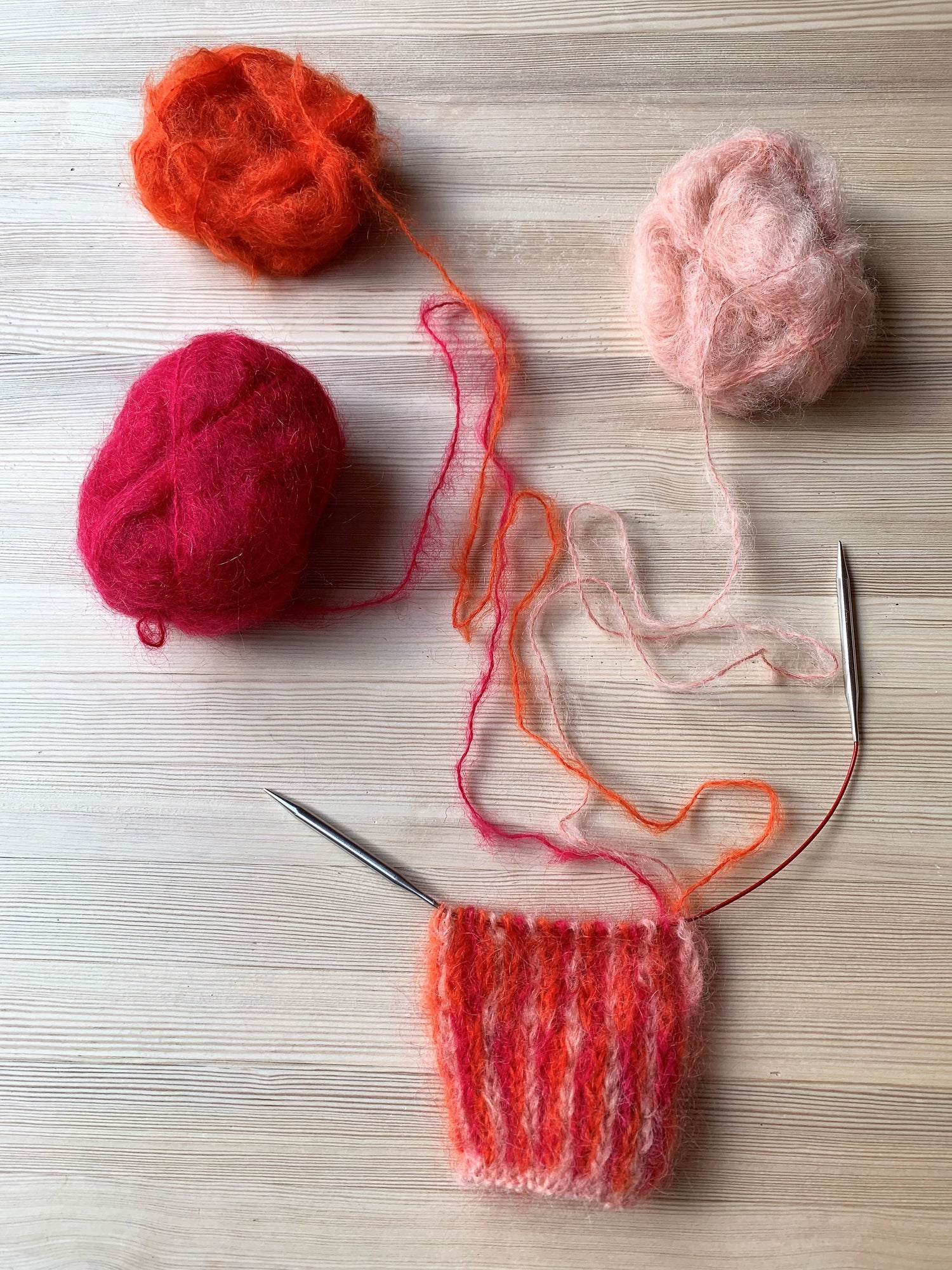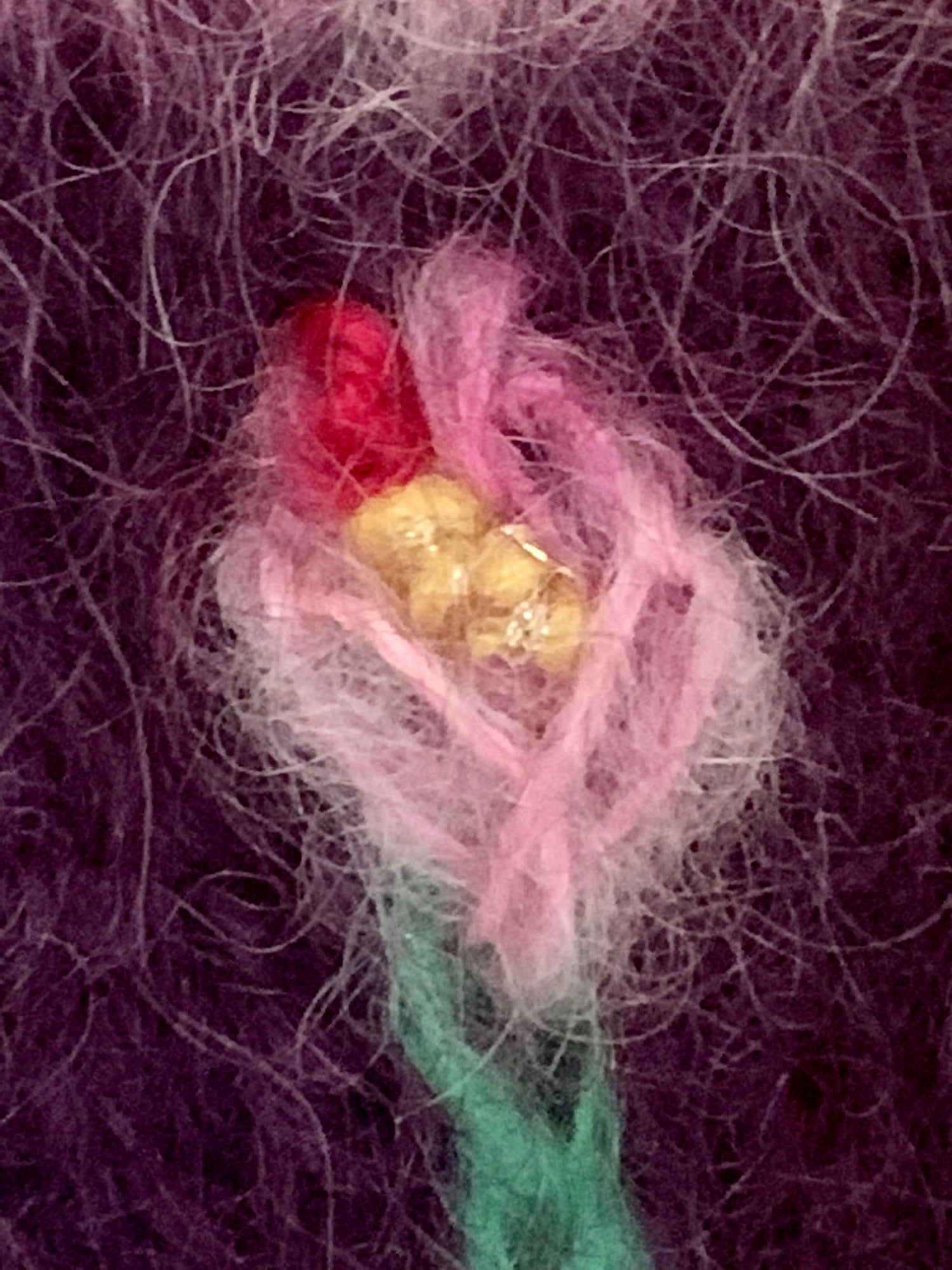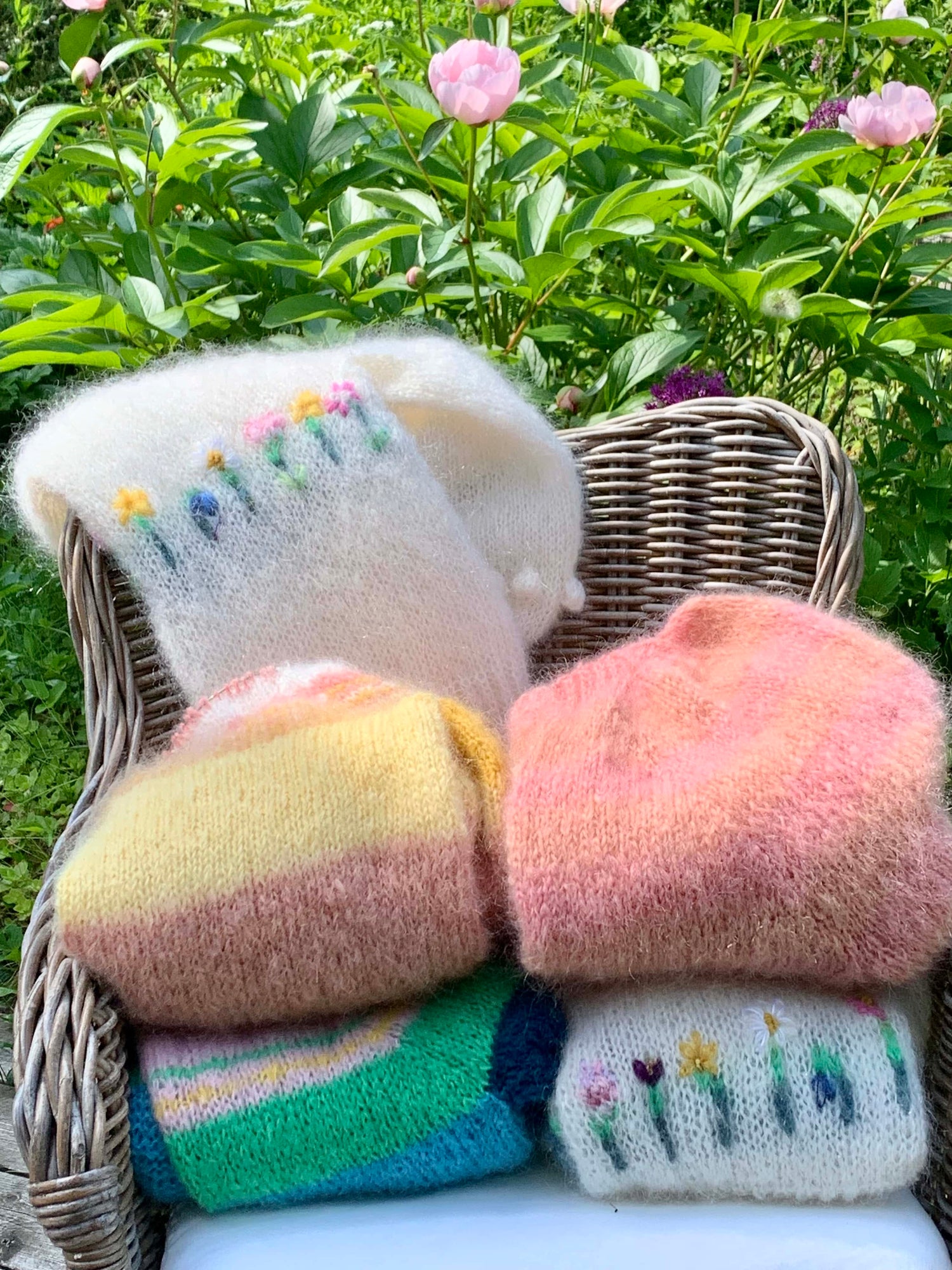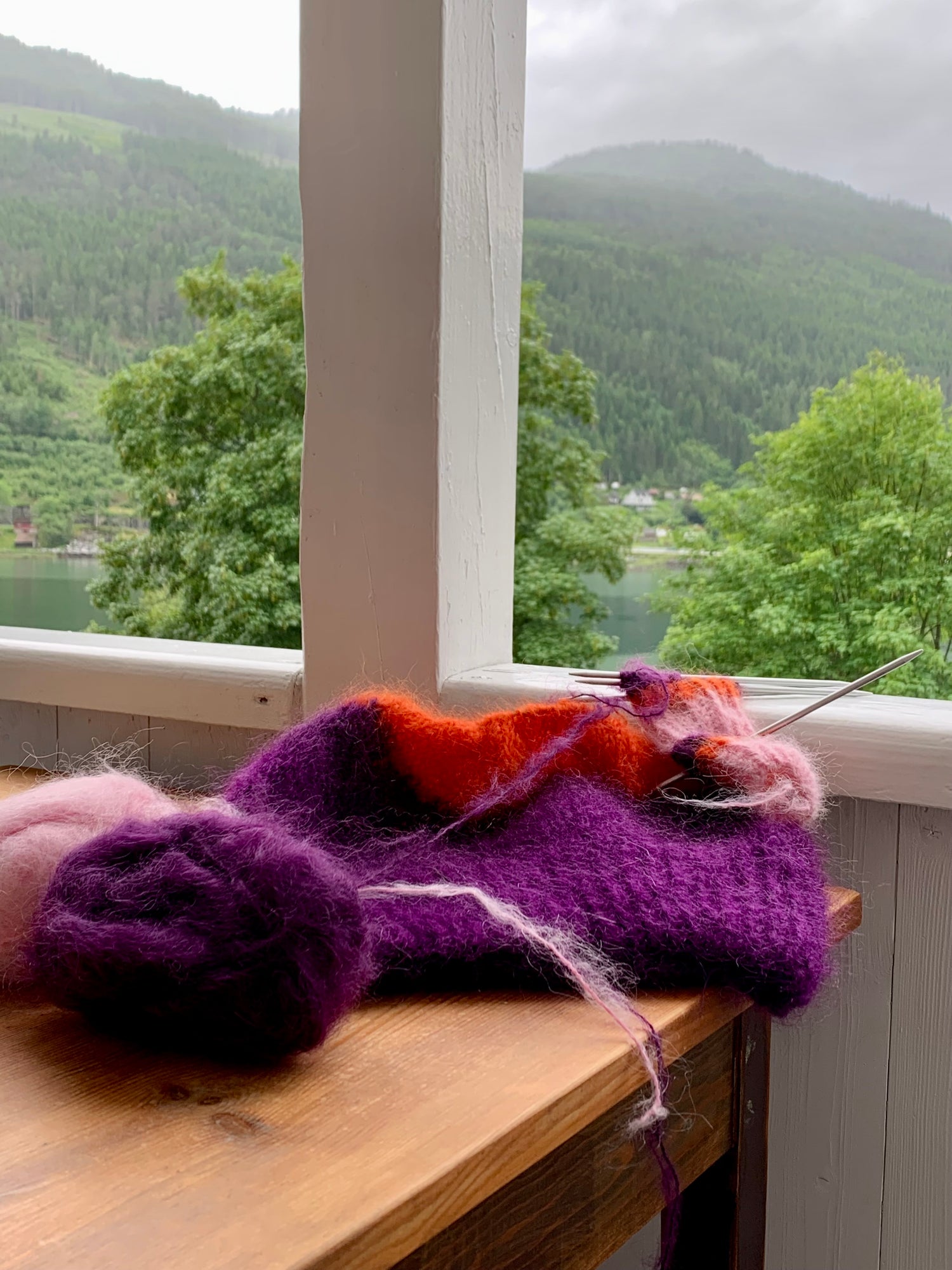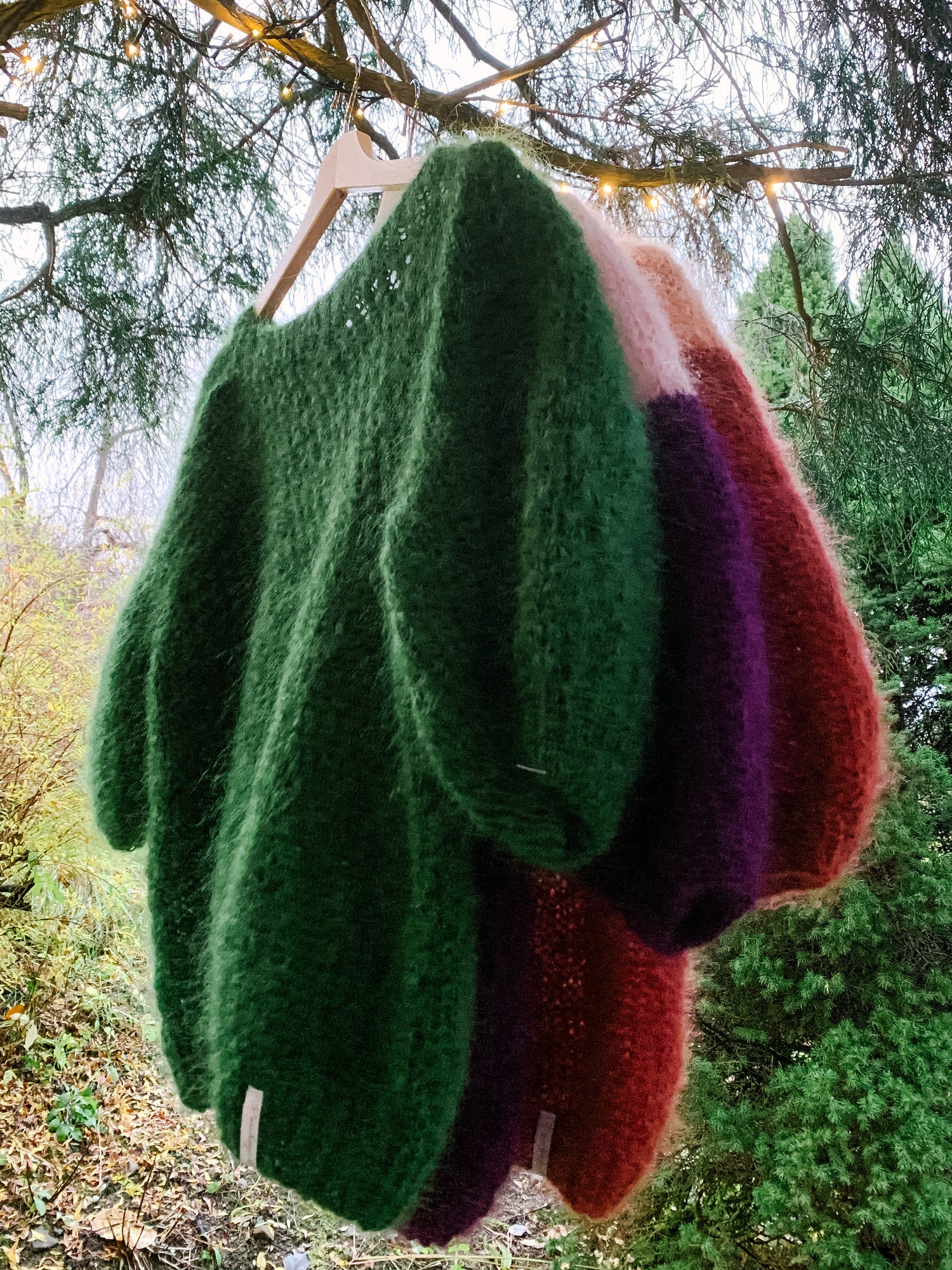Welcome to your new knitting knowledge portal Knittipedia
Here you will be able to find explanations and answers to what you may be stuck on. This portal will be in constant development.
Feel free to give us feedback if you miss something 💗
Have you never knitted before, or are you stuck with the pattern? Check out our knitting videos
In here you will find instructional videos that teach you to knit step by step, and that will guide you through challenges you may encounter when knitting.
Do you prefer to learn using drawn instructions?
Here you will find illustrations and explanations through text and images that may help where you are stuck.
Our embroideries
Here is our little embroidery school for those of you who want to embroider on your knitting needles. Here you will also find all the instructions for the embroideries on our knitwear.
Crocus
Choice of yarn and maintenance
What should you think about when choosing yarn? We have found what we think is important for you to wear your knitwear for as long as possible, and for the result to be as good as possible☔☔
Didn't find what you were looking for?
If you didn't find what you were looking for, please let us know and we'll put it right 🌼🌼🌼
By the way, did you know how good knitting is for the brain?
In this article, knitting is compared to meditation, where knitting provides mental relaxation and reduces stress.
"Not only does it give you a wonderful sense of pride to be able to finish a knitting project you've spent time on, in the process you actually both stimulate the whole brain and strengthen your fingers, but it should also be able to reduce stress and depression," says psychologist Grete Nordhelle.
Grete Nordhelle continues.. "If you knit for yourself, it will be a special gift for you. The fact that you can put on a sweater that you have chosen the color of, adapted to suit you and your wishes and put a lot of work into , gives a completely different feeling than putting on a mass-produced knit sweater from a chain store."
"The knitwear becomes what it becomes at its own pace, and it must be allowed to do so. It is like everything else in nature. The apple on the apple tree is not ripe until it is, and in the same way you must be allowed to finish the knitwear when you're ready for it, she says."
"It's important for the psyche to be active. Just the fact that you're doing something active and concentrating on it can make everything else become more distant while you're at it. Knitting can thus help create distance from problems, says psychologist Grete Nordhelle."
Want to read more from this article? Please follow the link below.
🌻🌻🌼🌼🌷
FREQUENTLY ASKED QUESTIONS
What should I knit as a beginner?
A simple scarf with thick yarn and straight stitches is recommended as a first project. It gives you a quick sense of mastery and allows you to practice basic techniques such as casting on, knitting and decreasing.

